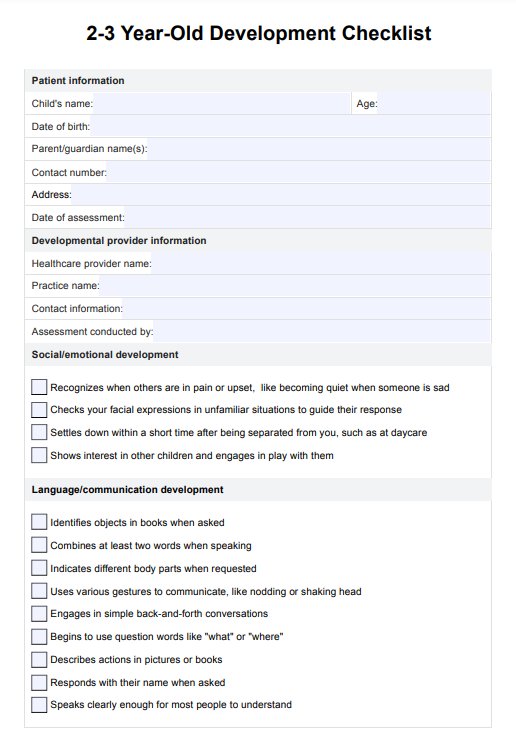Developmentally appropriate activities for a 2-3-year-old include simple games that encourage imagination, such as pretend play and basic puzzles. Caregivers must provide a safe environment where children can explore, learn, and develop their motor and social skills.

2-3 Year-Old Development Checklist
Track a child's development with Carepatron's free PDF download of the 2-3 Year-Old Development Checklist.
2-3 Year-Old Development Checklist Template
Commonly asked questions
At this age, children can typically run, jump, and climb, showing improved motor skills and coordination. They can also begin communicating using simple sentences, expressing their feelings, and interacting socially with peers and adults.
Cognitive development in toddlers aged 2-3 involves significant advancements in problem-solving skills and understanding and following simple instructions. They begin to recognize familiar objects, sort items by shape and color, and engage in imaginative play, reflecting their growing creativity and understanding of the world.
EHR and practice management software
Get started for free
*No credit card required
Free
$0/usd
Unlimited clients
Telehealth
1GB of storage
Client portal text
Automated billing and online payments











